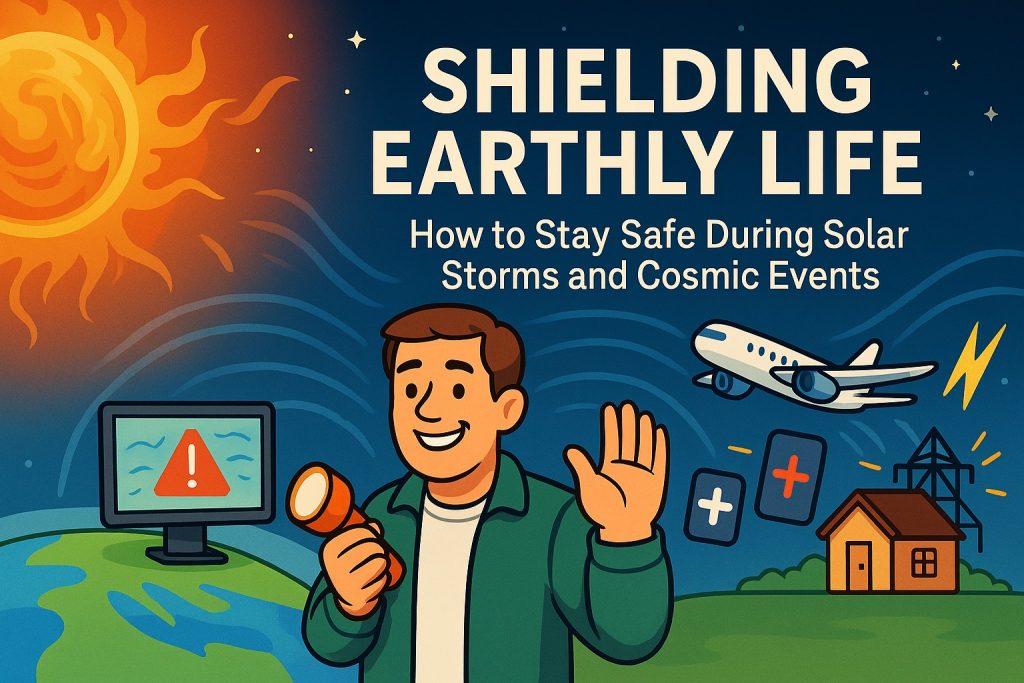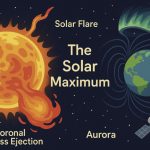As we move deeper into the digital age and rely more heavily on satellites, electronics, and high-altitude travel, we are becoming increasingly vulnerable to cosmic phenomena like solar storms, geomagnetic disturbances, and space radiation. While most people won’t feel the effects directly, the impact on technology and health can be significant. So, how can we protect ourselves during these powerful celestial outbursts?
Understanding the Threat: What Are We Protecting Against?
Solar Storms
Solar storms are caused by sudden bursts of solar activity, including solar flares and coronal mass ejections (CMEs). When directed at Earth, they can:
- Disrupt satellite navigation and communications
- Interfere with radio signals, especially at high latitudes
- Induce voltage surges in power grids
- Increase radiation exposure at high altitudes
Cosmic Radiation
Cosmic rays are high-energy particles from deep space. Though Earth’s atmosphere and magnetic field shield us, frequent flyers, astronauts, and people living at high altitudes receive higher exposure.
Who Is Most at Risk?
- Airline passengers and crew, especially on polar routes
- People using GPS-dependent technologies (e.g., navigation, agriculture, emergency services)
- Satellite operators, astronauts, and space tourists
- Power grid and telecom operators
- Amateur radio users
- Anyone living at higher latitudes (e.g., Scandinavia, Canada, Alaska, northern Russia)
Safety Tips During Solar Storms and Space Weather Alerts
1. Stay Informed
- Monitor space weather forecasts via:
- NOAA’s Space Weather Prediction Center (SWPC)
- NASA alerts
- Space weather apps
- Look out for geomagnetic storm warnings (rated G1 to G5) or solar radiation alerts
2. Minimize Air Travel Risk
- Avoid long-haul polar flights during major solar events.
- Airlines may reroute or delay flights when radiation risk increases.
3. Protect Your Electronics
- Use surge protectors for your devices.
- Back up important data in case of power grid failure or satellite outages.
- Satellite users should prepare for temporary signal degradation.
4. Be Prepared for Power Disruptions
- Keep a battery-powered radio, flashlight, and emergency supplies on hand.
- Avoid overloading home power systems.
- In rural areas, consider alternative energy sources or generators.
5. For Astronauts and Space Workers
- Stay in shielded areas of spacecraft or stations.
- Postpone spacewalks during radiation events.
- Wear dosimeters to monitor exposure.
Long-Term Protective Strategies
- Satellite shielding and hardened circuits
- Space weather forecasting satellites (e.g., SOHO, DSCOVR, GOES)
- Ground-based infrastructure protection: power grid insulation, transformer upgrades
- Better flight planning software that integrates solar data
Glossary
- Solar Flare – A sudden burst of energy from the Sun’s surface.
- Coronal Mass Ejection (CME) – A massive eruption of plasma and magnetic fields from the Sun.
- Geomagnetic Storm – A disturbance in Earth’s magnetic field caused by solar activity.
- Cosmic Rays – High-energy particles from outer space that can affect electronics and health.
- Dosimeter – A device that measures exposure to radiation.
Conclusion
Though solar storms and cosmic radiation sound like science fiction threats, they are very real—and increasingly relevant in our technology-driven world. Staying informed and prepared allows us to reduce risk and avoid the worst disruptions. Whether you’re flying at 35,000 feet, managing a data center, or just scrolling through your GPS map, knowing what’s happening above the clouds could keep you safe below them.


